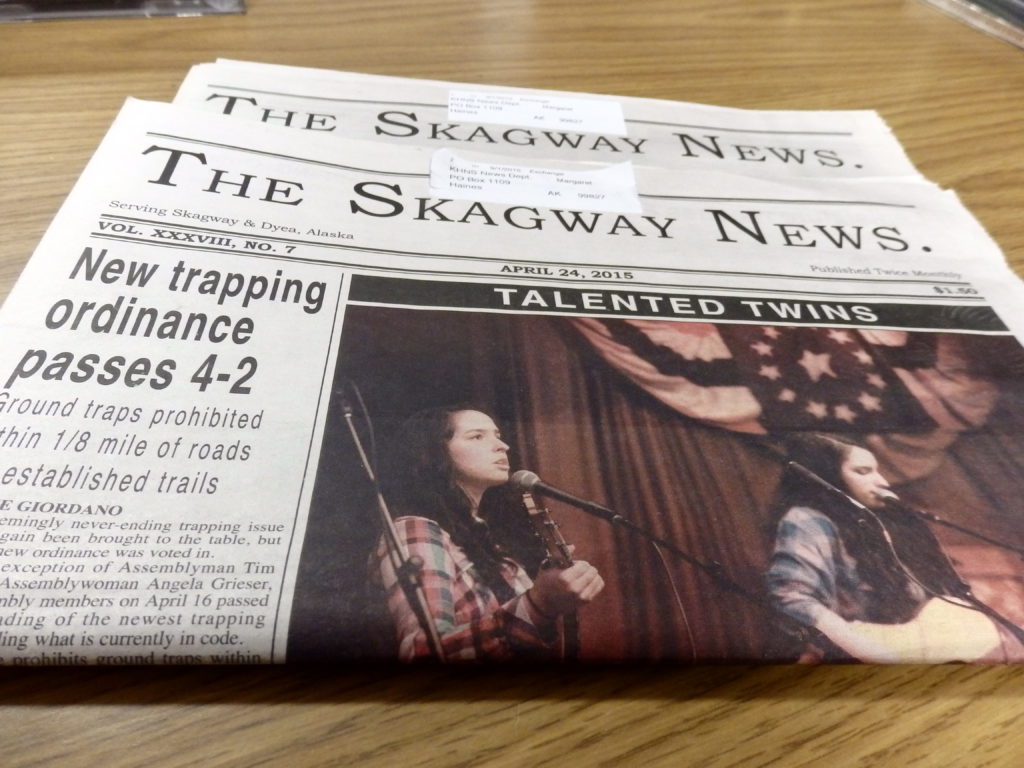Winter weather isn’t far away and this week could see the first real snow of the season. KHNS’ Mike Swasey talked with meteorologist Caleb Cravens with the National Weather Service in Juneau for the latest forecast for the upper Lynn Canal.
Swasey – So, Caleb, how does the weather look this week in the upper Lynn Canal?
Cravens – Well, this week is looking pretty interesting for the upper Lynn Canal area. As we go through the week into Wednesday and Thursday, we’re looking at another impactful storm that’s going to move into the Gulf. A storm force low, so looking at a pretty strong system. It’s going to be moving into the central Gulf coast by Thursday, as it does so we’re looking at a pretty strong northerly outflow for the northern Lynn Canal area. We’re looking at the potential for gales, northerly gales from Thursday into Friday.
Swasey – So when you say northerly outflow, you just mean wind’s coming out of the north.
Cravens – Exactly. So northerly outflow winds in general just mean that the winds are going to be coming from the interior. And with that, you typically have drier conditions, you can have cooler temperatures if there’s a lot of cold air in place in the interior.
Swasey – Which I’m guessing there is because it’s November in the interior, there’s probably going to be some chilly air. And what kind of miles per hour are we looking at?
Cravens – Right now we’re looking at ballpark numbers. On Thursday, we’re looking at 20 to 25 mphr winds over land. But for the mariners out there through Lynn Canal, we’re looking at high-end small crafts to the potential of gale warnings through Thursday and Friday.
Swasey – How many miles an hour does it take to get to be a gale force?
Cravens – Typically, the qualifiers for our mariners are in knots. So a gale is 35 knots, minimum of 35 knots is, you can say, is around 40 miles per hour.
Swasey – Yeah, that’s, that’s a stiff breeze. And what are the actual core temperatures going to be?
Cravens – Our daytime highs, we’re looking at mid to low 30s. And then our overnight lows in the 20s. So that begs the question of what is our precipitation going to look like and when is it going to arrive? But there’s the potential of snow to move into the Lynn Canal area on Friday.
Swasey – So after this low-pressure system clears out of the Gulf, then we’ve got something else coming in, that’s going to bring moisture?
Cravens – Exactly. So on Friday, the same low is going to be in the Gulf. But by Friday, the precipitation is going to arrive because what happens is we get a shift in our flow, instead of our northerlies that will be impacting the upper Lynn Canal area through Thursday, we’re going to get a shift to southerlies. That’s going to shift to the south and as it does, it’s going to allow moisture to drive up through the upper Lynn Canal area. And with the moisture and temperatures being relatively cool, we’re likely going to see snowfall.
Swasey – Okay, so this weekend, you know, this is the first weekend that the US border has been open to Canadian travelers. What are travelers from Whitehorse, what should they expect on their way down to Skagway or Haines coming down over those mountain passes?
Cravens – So I would say Friday, we could see a decent amount of snow. Right now, nothing is for certain but we’re looking at a couple of inches at least and so with that driving conditions could be hazardous. But as we go into Saturday, Sunday, we turn into more of a shower pattern so it’s not going to be as consistent precipitation as it will be on Friday.
Swasey – All right, Caleb Cravens, appreciate the time and have yourself a wonderful afternoon.
Cravens – You too. Thanks.
That was KHNS’ Mike Swasey and federal meteorologist Caleb Cravens discussing the latest forecast for the upper Lynn Canal. For the up-to-the-minute forecast, visit weather.gov.








